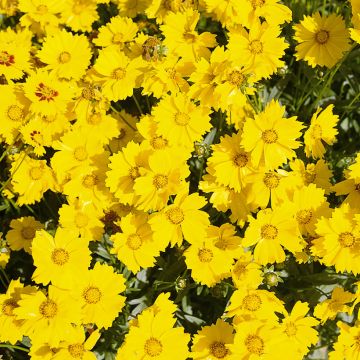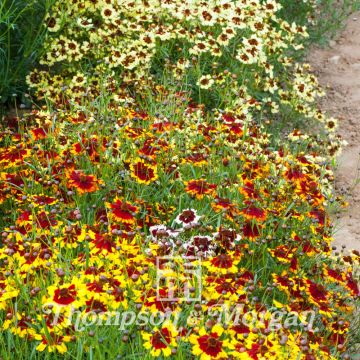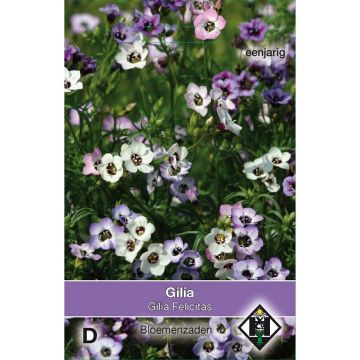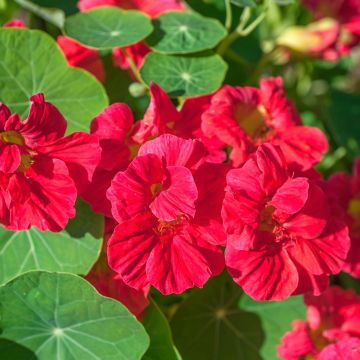

Coreopsis tinctoria Seeds - Plains coreopsis
Coreopsis tinctoria Seeds - Plains coreopsis
Coreopsis tinctoria
Plains coreopsis, Garden Tickseed, Golden Tickseed
Special offer!
Receive a €20 voucher for any order over €90 (excluding delivery costs, credit notes, and plastic-free options)!
1- Add your favorite plants to your cart.
2- Once you have reached €90, confirm your order (you can even choose the delivery date!).
3- As soon as your order is shipped, you will receive an email containing your voucher code, valid for 3 months (90 days).
Your voucher is unique and can only be used once, for any order with a minimum value of €20, excluding delivery costs.
Can be combined with other current offers, non-divisible and non-refundable.
Home or relay delivery (depending on size and destination)
Schedule delivery date,
and select date in basket
This plant carries a 6 months recovery warranty
More information
We guarantee the quality of our plants for a full growing cycle, and will replace at our expense any plant that fails to recover under normal climatic and planting conditions.
Would this plant suit my garden?
Set up your Plantfit profile →
Description
Coreopsis tinctoria is an easy-to-grow and drought-tolerant dye plant. Throughout the summer, it is covered in bright yellow flowers with red spots, revealing a brown centre. They can be used to dye textiles orange-yellow. This large, bushy annual will find its place in a sunny flower bed or even in the vegetable garden. It will attract bees and butterflies. It is an ideal plant for a drought-tolerant garden.
From the Asteraceae family, the Coreopsis genus includes about 80 to 100 species of annuals and perennials that grow in meadows and wooded areas of Central and North America. The tinctoria species is a widespread annual plant in North America. As its name suggests, it is a dye plant. The flowers of this Coreopsis are used for dyeing or pigment production in shades of orange-yellow. They are hand-picked when fully open. For the mordant dyeing technique, they are used fresh or dried. This technique requires a textile preparation step that involves boiling the fabric with alum powder for an hour and then rinsing it. Otherwise, they are dried and ground to be transformed into pigment.
Coreopsis tinctoria forms a bushy clump with light and slender stems. With rapid growth, it can reach between 60 and 90 cm tall and 30 to 45 cm wide. Its basal leaves measure 7 to 10 cm long. They are medium to dark green, entire, pinnate or bipinnate with linear leaflets. From June to October, it is covered in notched ligulate flowers in yellow with reddish-brown aureoles and a central reddish-brown disk. They measure between 3 and 5 cm in diameter. They are nectar-rich and make excellent wildflower bouquets.
If you want to start natural dyeing, here are other easy-to-grow dye plants that can join your Coreopsis tinctoria in the garden. Consider Anthemis tinctoria Wargrave Variety which produces a yellow colour or Centaurea cyanus which offers a beautiful blue shade.
Report an error about the product description
Flowering
Foliage
Plant habit
Botanical data
Coreopsis
tinctoria
Asteraceae
Plains coreopsis, Garden Tickseed, Golden Tickseed
Coreopsis cardaminifolia, Calliopsis cardaminifolia
Cultivar or hybrid
Other Coreopsis seeds
View all →Planting and care
Coreopsis tinctoria thrives in well-drained soil and sunlight. It is an easy-to-grow plant that is drought and cold resistant.
Indoor Sowing: From March to May, between 15 and 20°C, sow in a seed tray and lightly cover the seeds with potting soil. Germination takes place 10 to 15 days after sowing. When your plants have 5 to 6 leaves and are strong enough, transplant them into a pot or directly into the ground if the soil is warm enough. Plan to sow 6 to 8 weeks before the last frost date.
Direct Sowing in the Ground: Between April and June, depending on the region, once all risk of frost has passed. Thin out approximately every 15 to 30 cm to keep the most developed plants.
Sowing period
Intended location
This item has not been reviewed yet - be the first to leave a review about it.
Similar products
Haven't found what you were looking for?
Hardiness is the lowest winter temperature a plant can endure without suffering serious damage or even dying. However, hardiness is affected by location (a sheltered area, such as a patio), protection (winter cover) and soil type (hardiness is improved by well-drained soil).

Photo Sharing Terms & Conditions
In order to encourage gardeners to interact and share their experiences, Promesse de fleurs offers various media enabling content to be uploaded onto its Site - in particular via the ‘Photo sharing’ module.
The User agrees to refrain from:
- Posting any content that is illegal, prejudicial, insulting, racist, inciteful to hatred, revisionist, contrary to public decency, that infringes on privacy or on the privacy rights of third parties, in particular the publicity rights of persons and goods, intellectual property rights, or the right to privacy.
- Submitting content on behalf of a third party;
- Impersonate the identity of a third party and/or publish any personal information about a third party;
In general, the User undertakes to refrain from any unethical behaviour.
All Content (in particular text, comments, files, images, photos, videos, creative works, etc.), which may be subject to property or intellectual property rights, image or other private rights, shall remain the property of the User, subject to the limited rights granted by the terms of the licence granted by Promesse de fleurs as stated below. Users are at liberty to publish or not to publish such Content on the Site, notably via the ‘Photo Sharing’ facility, and accept that this Content shall be made public and freely accessible, notably on the Internet.
Users further acknowledge, undertake to have ,and guarantee that they hold all necessary rights and permissions to publish such material on the Site, in particular with regard to the legislation in force pertaining to any privacy, property, intellectual property, image, or contractual rights, or rights of any other nature. By publishing such Content on the Site, Users acknowledge accepting full liability as publishers of the Content within the meaning of the law, and grant Promesse de fleurs, free of charge, an inclusive, worldwide licence for the said Content for the entire duration of its publication, including all reproduction, representation, up/downloading, displaying, performing, transmission, and storage rights.
Users also grant permission for their name to be linked to the Content and accept that this link may not always be made available.
By engaging in posting material, Users consent to their Content becoming automatically accessible on the Internet, in particular on other sites and/or blogs and/or web pages of the Promesse de fleurs site, including in particular social pages and the Promesse de fleurs catalogue.
Users may secure the removal of entrusted content free of charge by issuing a simple request via our contact form.
The flowering period indicated on our website applies to countries and regions located in USDA zone 8 (France, the United Kingdom, Ireland, the Netherlands, etc.)
It will vary according to where you live:
- In zones 9 to 10 (Italy, Spain, Greece, etc.), flowering will occur about 2 to 4 weeks earlier.
- In zones 6 to 7 (Germany, Poland, Slovenia, and lower mountainous regions), flowering will be delayed by 2 to 3 weeks.
- In zone 5 (Central Europe, Scandinavia), blooming will be delayed by 3 to 5 weeks.
In temperate climates, pruning of spring-flowering shrubs (forsythia, spireas, etc.) should be done just after flowering.
Pruning of summer-flowering shrubs (Indian Lilac, Perovskia, etc.) can be done in winter or spring.
In cold regions as well as with frost-sensitive plants, avoid pruning too early when severe frosts may still occur.
The planting period indicated on our website applies to countries and regions located in USDA zone 8 (France, United Kingdom, Ireland, Netherlands).
It will vary according to where you live:
- In Mediterranean zones (Marseille, Madrid, Milan, etc.), autumn and winter are the best planting periods.
- In continental zones (Strasbourg, Munich, Vienna, etc.), delay planting by 2 to 3 weeks in spring and bring it forward by 2 to 4 weeks in autumn.
- In mountainous regions (the Alps, Pyrenees, Carpathians, etc.), it is best to plant in late spring (May-June) or late summer (August-September).
The harvesting period indicated on our website applies to countries and regions in USDA zone 8 (France, England, Ireland, the Netherlands).
In colder areas (Scandinavia, Poland, Austria...) fruit and vegetable harvests are likely to be delayed by 3-4 weeks.
In warmer areas (Italy, Spain, Greece, etc.), harvesting will probably take place earlier, depending on weather conditions.
The sowing periods indicated on our website apply to countries and regions within USDA Zone 8 (France, UK, Ireland, Netherlands).
In colder areas (Scandinavia, Poland, Austria...), delay any outdoor sowing by 3-4 weeks, or sow under glass.
In warmer climes (Italy, Spain, Greece, etc.), bring outdoor sowing forward by a few weeks.


















































